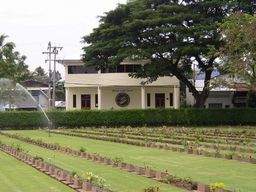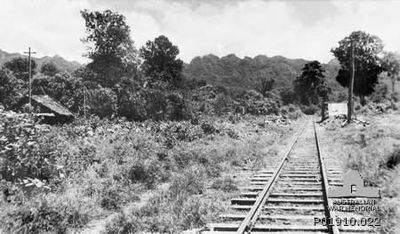

News of those held in the Dutch East Indies seems to have been withheld the longest. On the average New Zealand page 351 next-of-kin waited 18 months for the first news of their prisoner or internee relative the news even then was often only a card or a message over the Japanese-controlled radio. The first British lists did not come through until May 1942 by January 1943 less than a quarter had been notified and by September 1943 only 65 per cent of the British prisoners of war and only 20 per cent of them civilians. In spite of repeated requests for the regular forwarding of complete lists, not only of captures but of transfers and casualties, the Japanese never appear to have set up an organisation capable of dealing even with the notifications of the capture of the 300,000 Allied nationals in their hands.
H force thai burma railway full#
In their negotiations with the Japanese through neutral channels, the Allied authorities never ceased trying to obtain from the full information concerning the Allied nationals in their hands, regular facilities for the sending of relief supplies and mail, and permission for neutral inspectors to visit prisoner-of-war and internment camps. This extract courtesy of The New Zealand Historical publications branch: Report of the International Committee of the Red Cross on its activities during the Second World War, Vol,1,p.451 (We have a copy of ‘ The Prisoner of War’ magazine from February 1943 which notes a visit to Woosung camp Near Shanghai, China and mentions 3 of the main camps in Japan proper as having had visits). There is a great deal of evidence the ICRC did visit some camps which were made ‘presentable’ to them by the Japanese. In General, no direct access to the POWs was provided to the International Red Cross. 32,418 POWs in total were detained in those camps.Īpproximately 3,500 POWs died in Japan while they were imprisoned. Thus, in addition to the seven main camps, there were 81 branch camps and three detached camps at the end of the war. The organisation of POW camps in Japan was repeatedly reformed and rearranged, so the main camps, branch camps, dispatched camps and detached camps opened during the war numbered about 130. Cruelly & ironically the Japanese frequently painted supply ships with Red Crosses, yet did not do the same for those vessels that deserved these markings. In addition to the number of POWs who reached Japanese camps, approximately 11,000 POWs tragically lost their lives when allied air and submarine forces attacked the ships transporting the POWs to Japan. Furthermore, the Japanese Government had been very negligent in keeping records of such historical facts during the war. The most notorious use of forced labour was in the construction of the Burma–Thailand 'Death Railway'.Īccording to the findings of the Tokyo Tribunal, the death rate of Western prisoners was 27.1%, seven times that of POWs under the Germans and Italians.Īfter the war, it became clear that there existed a high command order – issued from the War Ministry in Tokyo – to kill all remaining POWs.ģ7,583 prisoners from the United Kingdom, Commonwealth and Dominions, 28,500 from Netherlands and 14,473 from the United States were released after the surrender of Japan.Īt the end of the war, the Japanese Armed Forces destroyed all documents related to the POW Camps.

Moreover, according to a directive ratified on 5 August 1937 by The Japanese emperor Hirohito, the constraints of the Hague Conventions were explicitly removed from prisoners of war from China, the United States, Australia, Britain, Canada, India, the Netherlands, New Zealand and the Philippines held by the Japanese armed forces and these POWs were subject to murder, beatings, summary punishment, brutal treatment, forced labour, medical experimentation, starvation rations and poor medical treatment.

The Empire of Japan, (which had never signed the Second Geneva Convention of 1929, it is, however, important to note that the Japanese Emperor had agreed to its provisions) did not treat prisoners of war under international agreements, including provisions of the Hague Conventions (18), either during the second Sino-Japanese War or during the Pacific War. Report of the International Committee of the Red Cross on its activities during the Second World WarĪctual visits to camps by the International Committee of the Red Cross Prisoners in Singapore thanking their Australian liberators CONTENT INDEX:


 0 kommentar(er)
0 kommentar(er)
